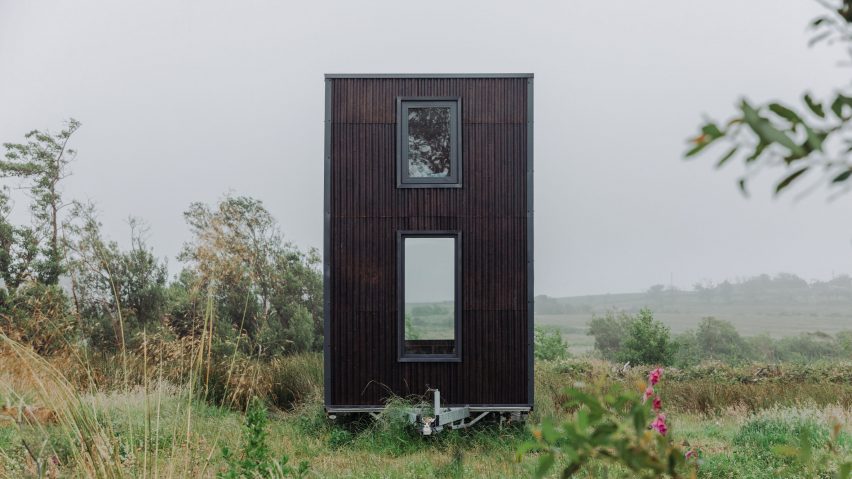
Hemp-clad Tigín Tiny Homes offer a way to "escape the rent trap" says social enterprise
Irish social enterprise Common Knowledge has teamed up with hemp producer Margent Farm to design a low-carbon micro home that it claims can support people affected by the housing crisis.
Designed in-house by Common Knowledge, the Tigín Tiny Homes take the form of oversized caravans built from natural materials that include Margent Farm's corrugated hemp cladding panels, cork insulation and natural rubber linoleum floor tiles.
They are intended for people struggling to buy their own home. Purchasers can either buy one of the 20-square-metre micro homes ready made, or learn the skills to build their own.
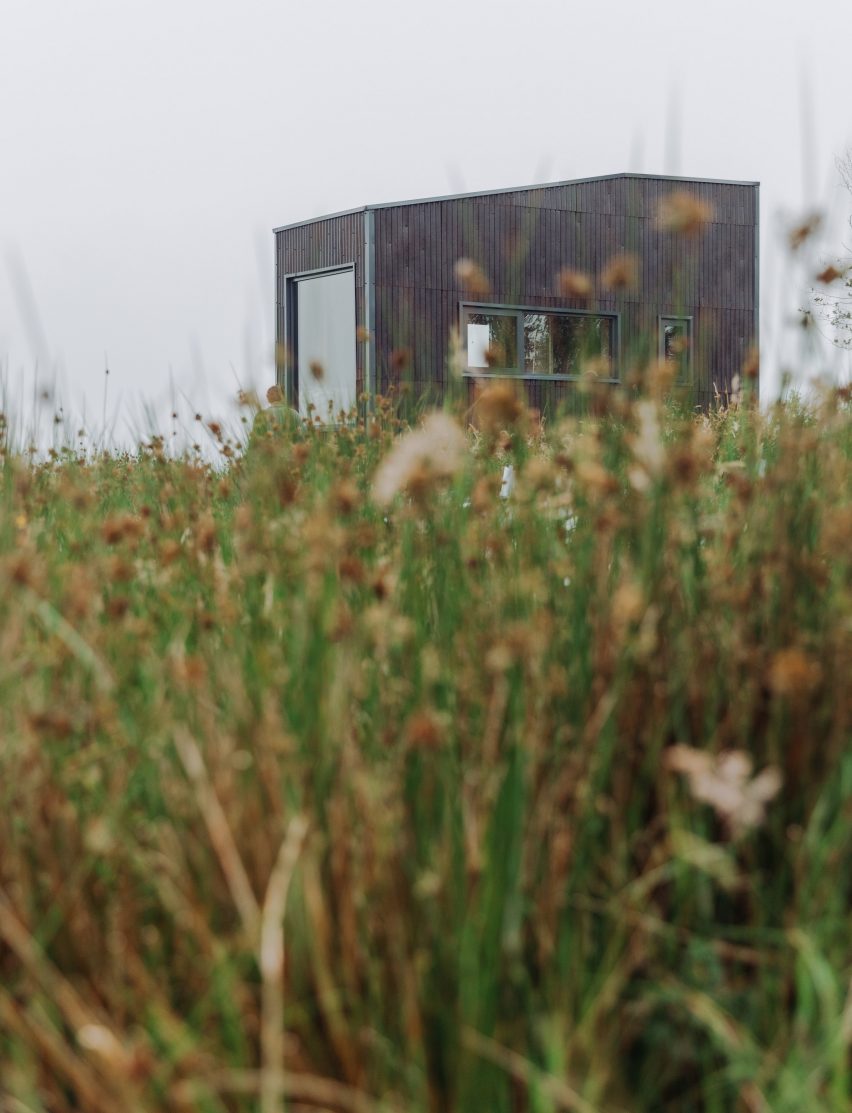
With property prices in Ireland increasing by as much as 11 per cent a year, Common Knowledge believes these homes offer an affordable solution for those looking to "escape the rent trap".
"The Tiny Home is filling that gap between moving out of the rental market and owning your own home," said Harrison Gardner, who co-founded the organisation along with Erin McClure, Fionn Kidney and Spider Hickman and is also a passive building designer.
"The reality for a lot of people is that they can't afford a home that's actually ready to move into. They can only afford a home that needs a lot of work, and they can't afford to do that work and pay rent," Gardner told Dezeen.
"The Tiny Home is filling this gap; people can use it for a year or two or three, while they work on their forever home."
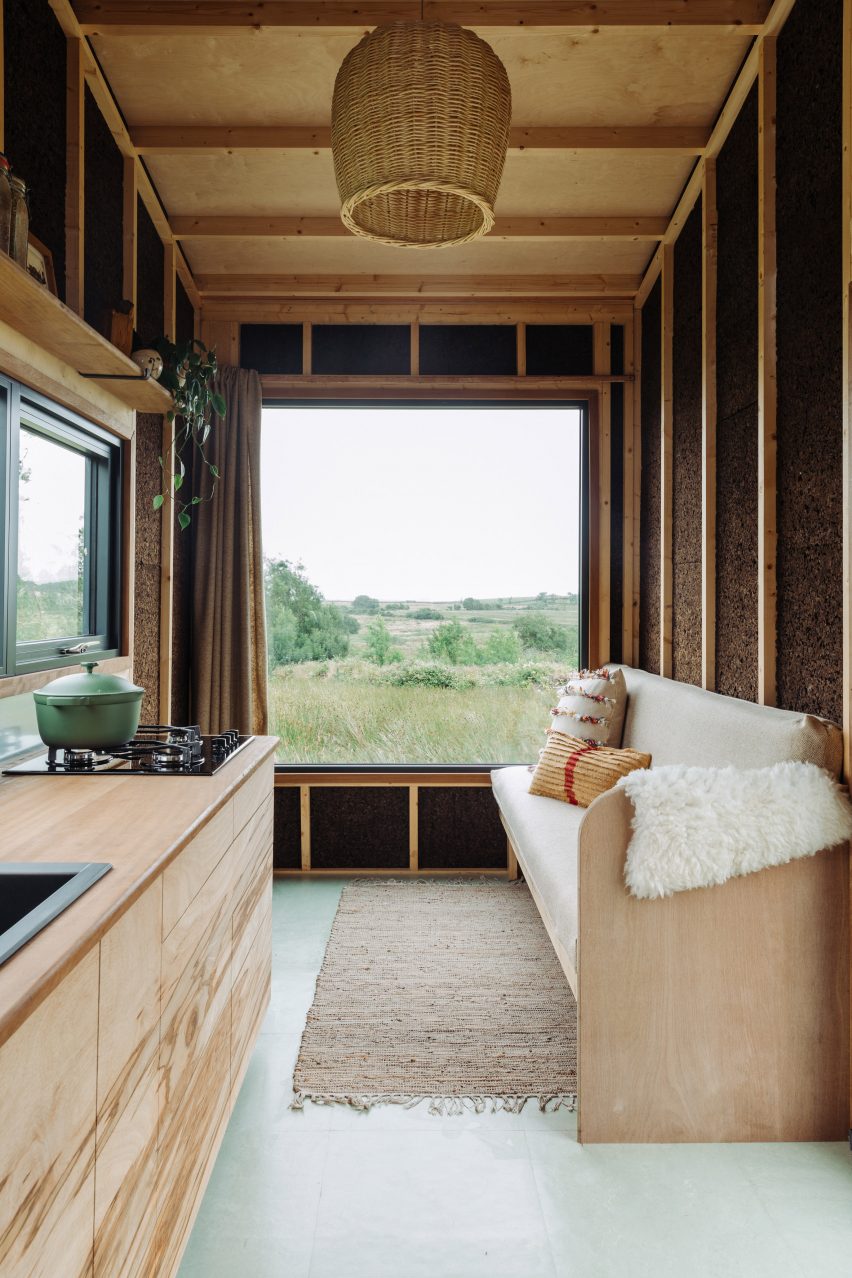
Common Knowledge is primarily an education provider. By hosting workshops that teach everyday construction skills – like bricklaying, carpentry and welding – it aims to empower people to self-build.
The Tigín Tiny Homes – named after the Gaelic word for a small house or cottage – are the result of these workshops.
They are also available to buy ready-made at prices starting from €55,000 for people unable or unwilling to build themselves.
"We have now taught over 200 people how to build their own Tiny Homes," said Kidney. "Of course, the byproduct of this is that we have produced four Tiny Homes that we can offer for sale."
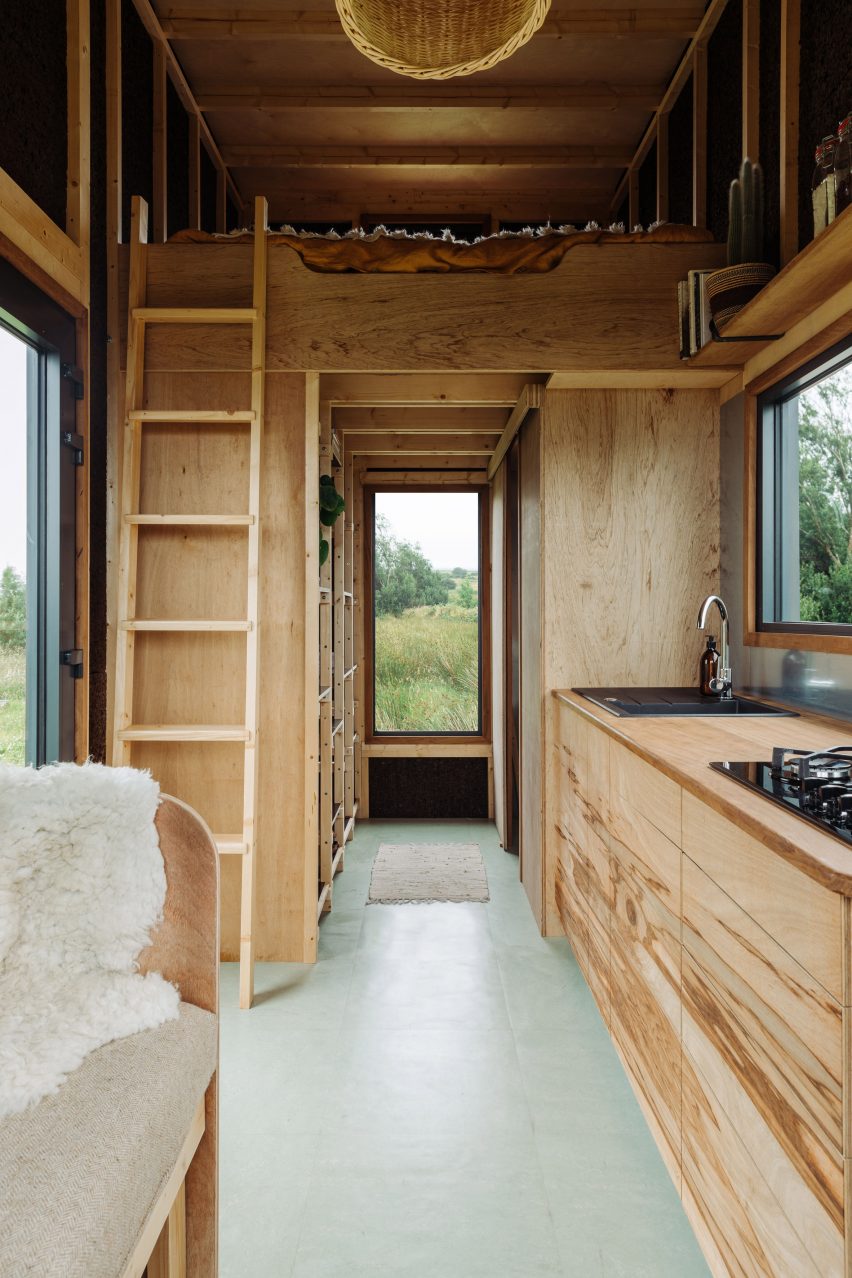
The target audience for these prefabricated homes includes parents supporting their grown-up children to get on the property ladder, and those who don't have the time to take on a building project.
The profits will be used to fund future workshops.
Each home contains two floors, with the interiors led by Common Knowledge's McClure. The lower level includes a window seat that doubles as a bed, as well as a kitchenette, a toilet and shower, and a storage area or workspace.
A ladder leads up to a mezzanine floor containing a large loft bed.
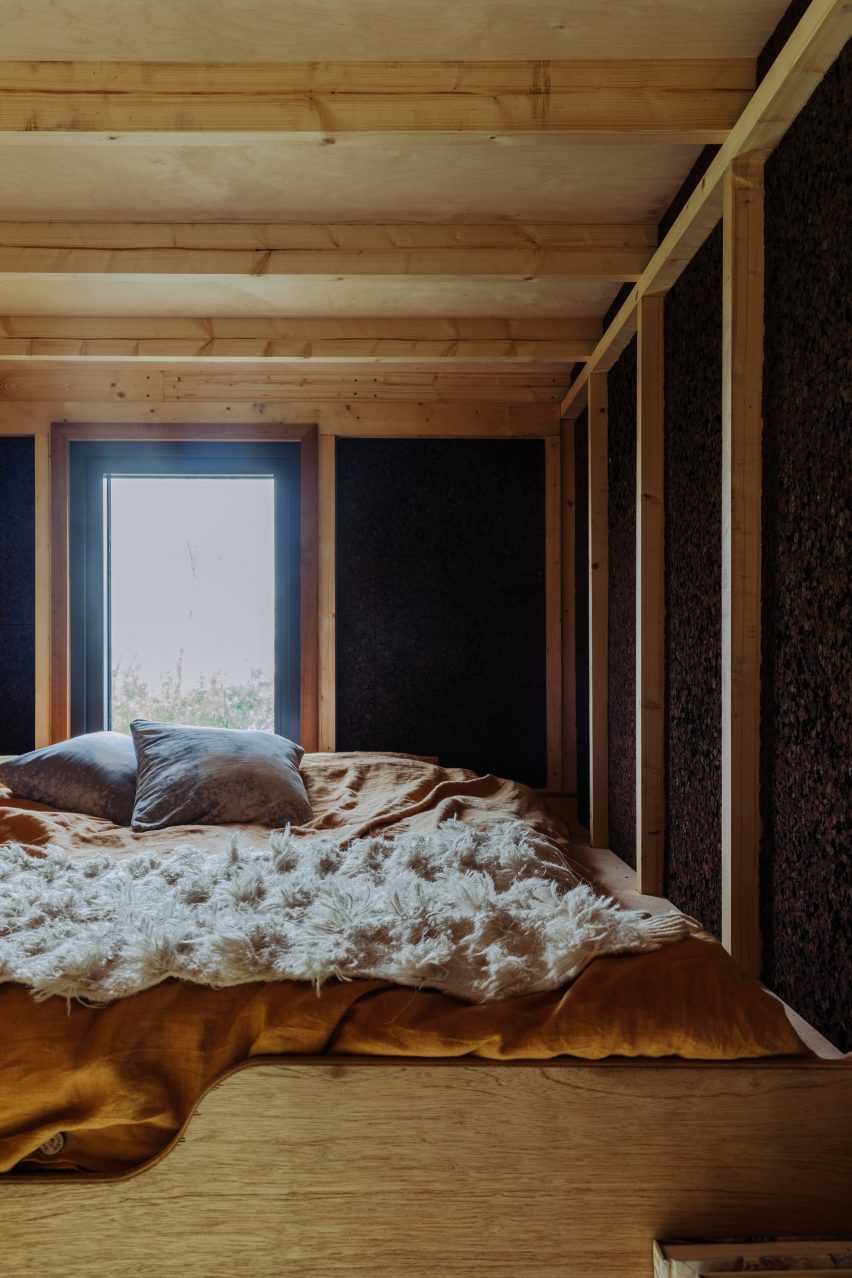
As the Tigín Tiny Homes are mobile, weight was a key consideration when selecting materials. It was this that led Common Knowledge to Margent Farm's corrugated hemp panels.
First used in the pioneering zero-carbon Flat House, these panels are made by combining cannabis plant fibres with a sugar-based resin produced from agricultural waste, making them both lightweight and highly sustainable.
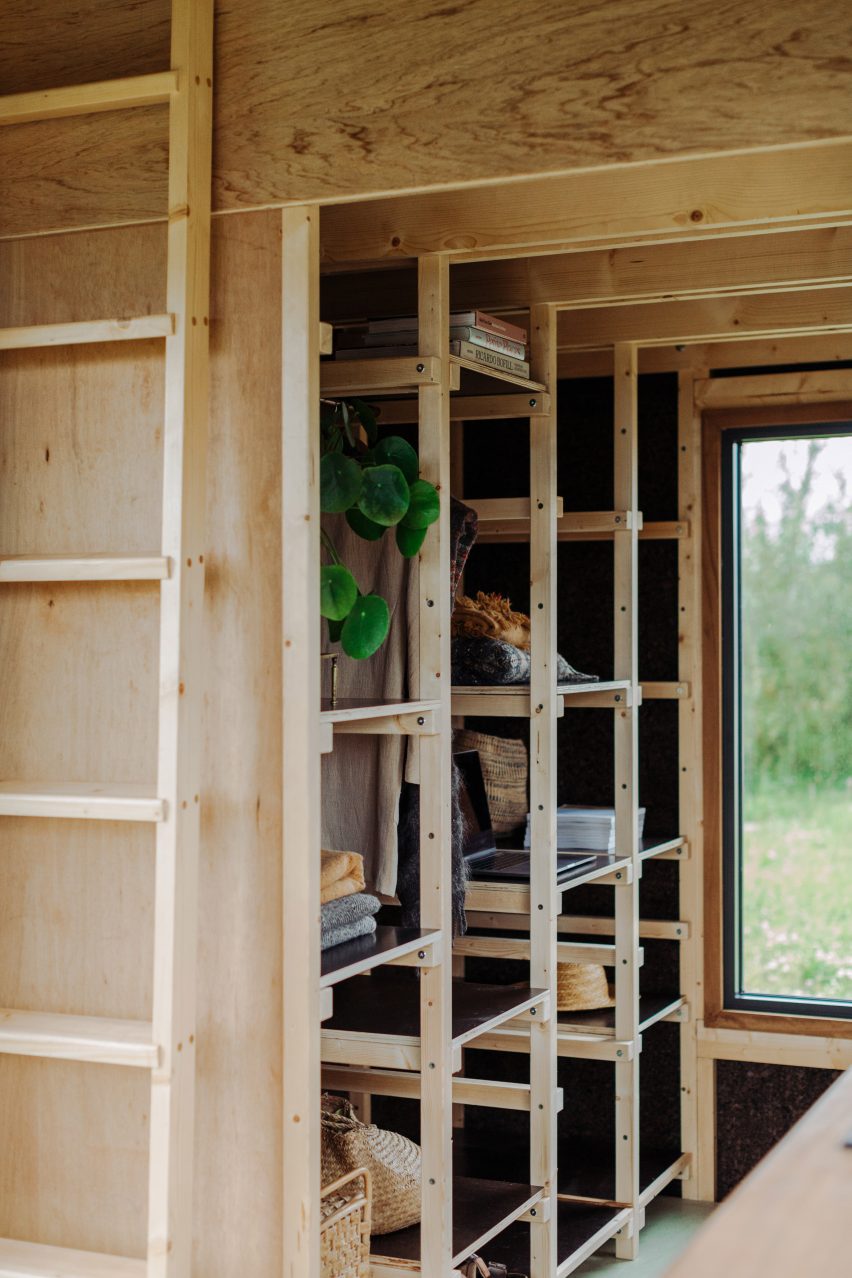
Although planning regulations make it difficult for these panels to be used in typical architecture projects, their use on mobile structures is not so restricted.
"Hemp ticked most of the boxes," said Harrison, "and the fact it's grown and manufactured in the UK is amazing."
Other design details include large windows, an eco-composting toilet and a customised electrical system that can be used off-grid or connected up to mains power.
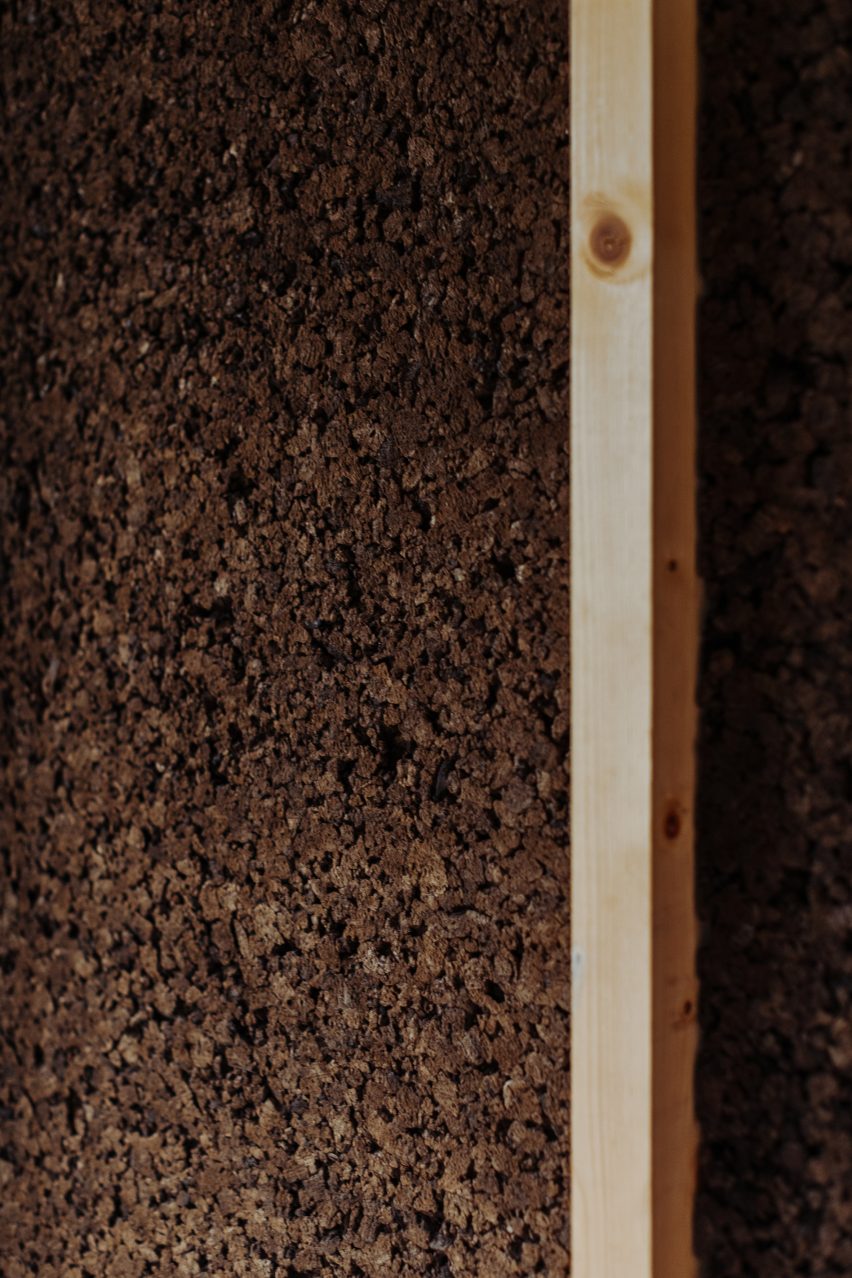
Common Knowledge plans to open-source the designs for the Tigín Tiny Homes so that anyone can build their own, either using these materials or alternatives.
Gardner said the plan is to release a toolkit that includes a full set of architectural drawings, a materials list with suggested suppliers, and a price scale.
"We're trying to create options in the toolkit, so people can scale the price up or down," he said. "For instance, if they don't want to use cork insulation, they can switch it out for something else."
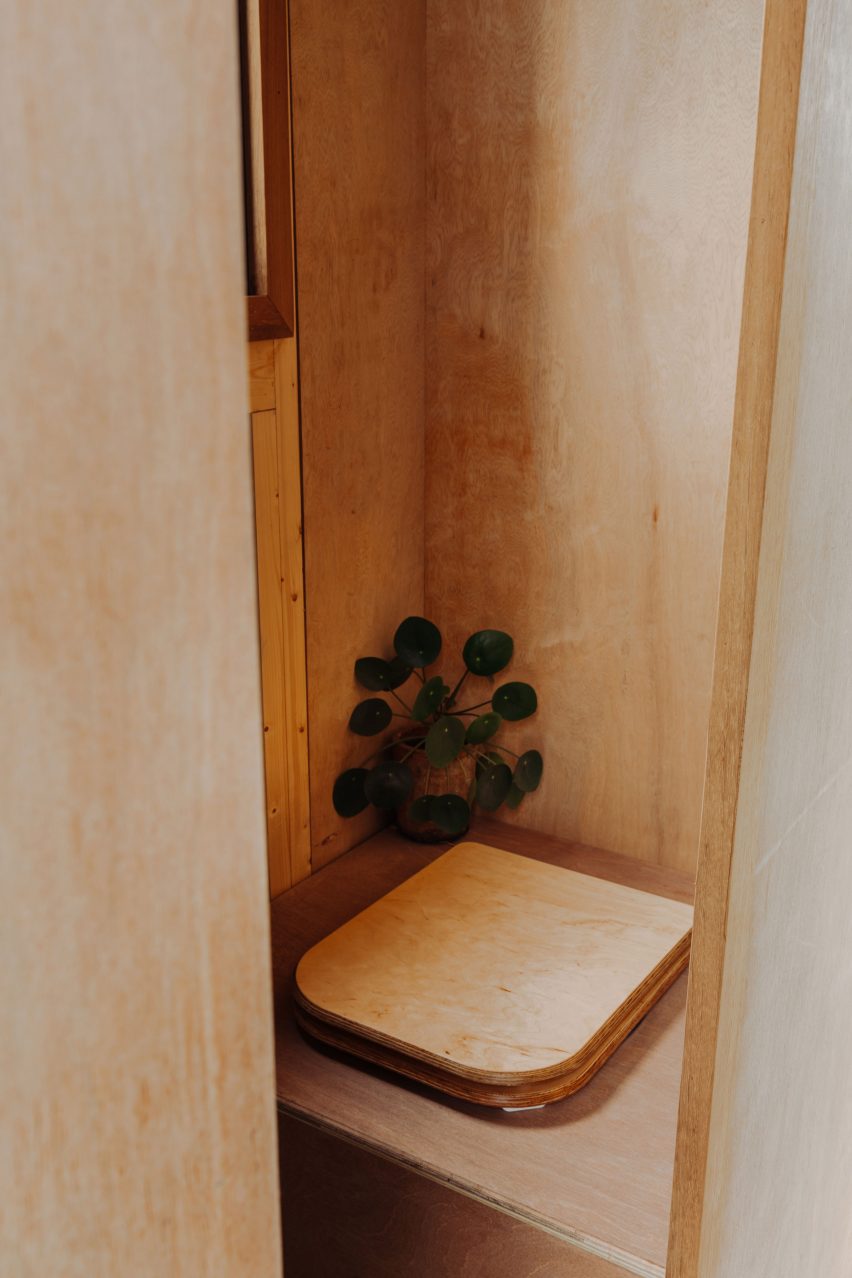
He believes the use of natural materials, combined with the natural light and views, make the Tigín Tiny Homes a more attractive option than the traditional mobile home.
"Compared to a lot of tiny homes that exist in the world, ours is quite tall and it has a lot of glazing," Gardner added.
"You get a real feeling of space and feel completely connected to nature."
Other mobile micro homes recently featured on Dezeen include Quatro by Land Ark, Dodo Van by Juan Alberto Andrade and María José Váscones and Base Cabin by Studio Edwards.
The photography is by Shantanu Starick.